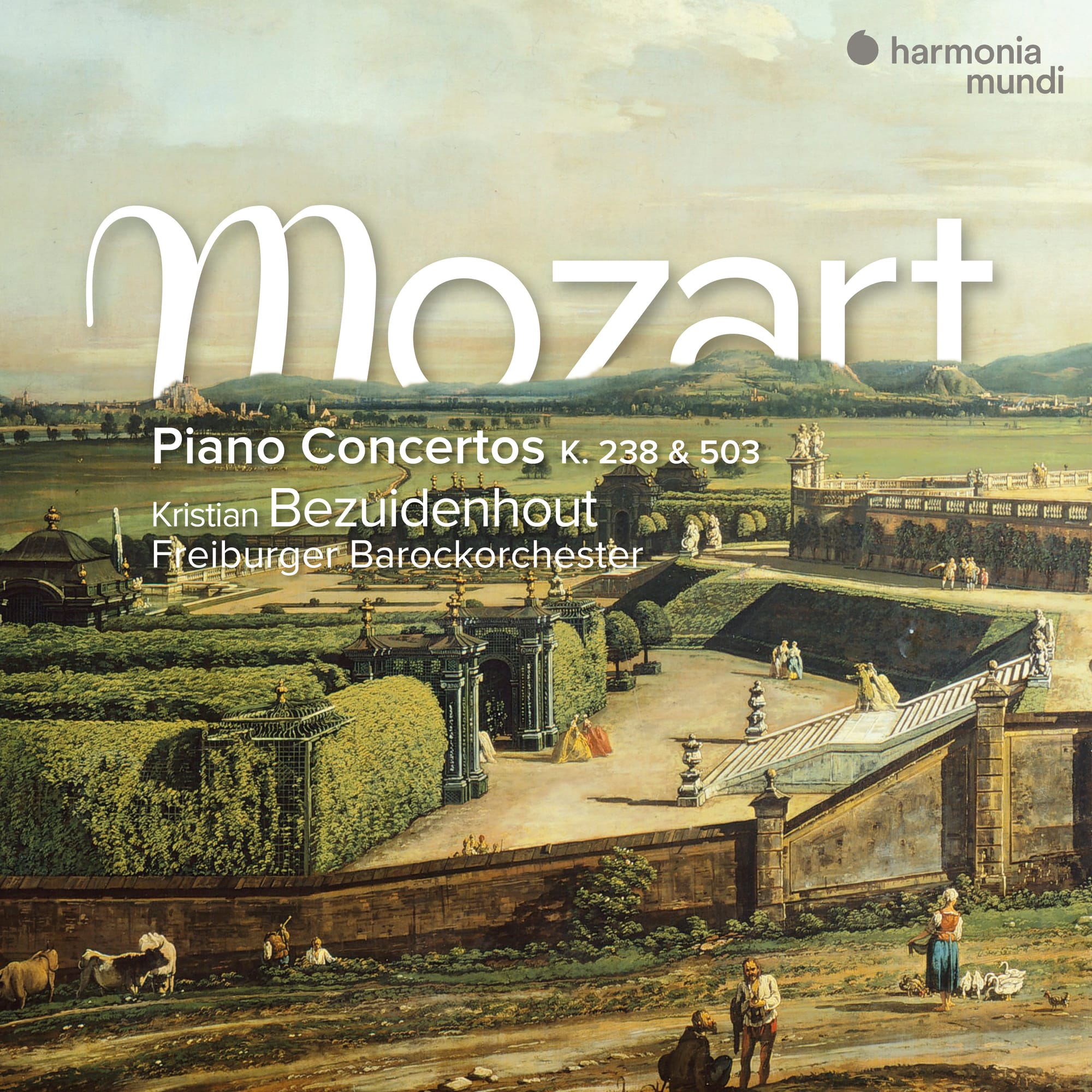Mozart from Kristian Bezuidenhout

A mere eleven years separate the two concertos on this recording (nos. 6 and 25: 1776 and 1786), but they are worlds apart.
It is always a joy to hear earlier Mozart, and the Piano Concerto inB flat, K238 is one of the rarer concertos. Yet it comes after the composition of the Violin Conceros, and Mozart approaches the form with a new confidence. It was probably written for himself, and Mozart later took it on tour when he left Salzburg for Mannheim and Paris as well as Munich and Augsburg.
Although often numbered No. 6, it is Mozart's second original concerto for keyboard (No. 5 has attained more currency, certainly on record). The first four were arrangements of keyboard movements for keyboard with orchestra, shaped into concertos.
Kristian Bezuidenhout pays on a copy of aa Walter ( Sons fortepiano from around 1805 (Paul McNulty, 2008). It has just the perfect amount of body, and can sustain teh cantabile of the Andante un poco adagio. This beautiful slow movement, a stream of invention, acts as perfect contrast to the bright first movement (Allegro apart). They are best heard one after the other:
The finale, a Rondeau, is bright but actually quite complex. It is the longest movement, and Mozart has the horns stand ou at several important moments (Bart Aebeydt and Johan van Neste):
The Concerto K 503 is far better-known. After K 238, the opening comes as a blaze of (C-Major) light. Like K 238, the score is marked “per cembalo” (for harpsichord) but this far bigger-boned piece is completely suited to the fortepiano. We now Mozart had a Walter fortepiano the Viennese maker Anton Walter), and was a convert. The Freiburg Baroque Orchestra revel in their new-found freedom after the gentilité of the first concerto, and Bezuidenhout is superbly confident. Bezuidenhout plays his own cadenza, and given Bezuidenhout's immersion in the music of Mozart it is unsurprisingly impressive. It encapsualates the grandeur of the music surrounding it; perhaps only Robert Levin (who improvises his own cadenzas on the spot) is in the same class. An then just listen to the crispness ofthe timpani (Charlie Fischer) in the orchestral coda:
The Andante is beautifully paced, Woodwind are prominent here, and there are some lovely contributions from oboist Josep Domènech. Bezuidenhout's playing is joy itself, teh left-hand perfectly even, the right projecting perfectly. There is one particularly tricky rhythmic passage in this movement, a quick flurry on piano prior to an orchestral entrance, that Bezuidenhout gets just right:
The finale contains a quote from the ballet music of his opera Idomeneo. The whole movement has a bright and breezy feel to it:
Bezuidenhout eases back into the returns of the main theme beautifully. The marking is Allegretto; arguably Bezuidenhout verges on the brisker side of that marking, but his articulation is so perfect it matters not:
A most recommendable disc.
The disc is available at a 6% discount at Amazon via this link; Spotify below.
